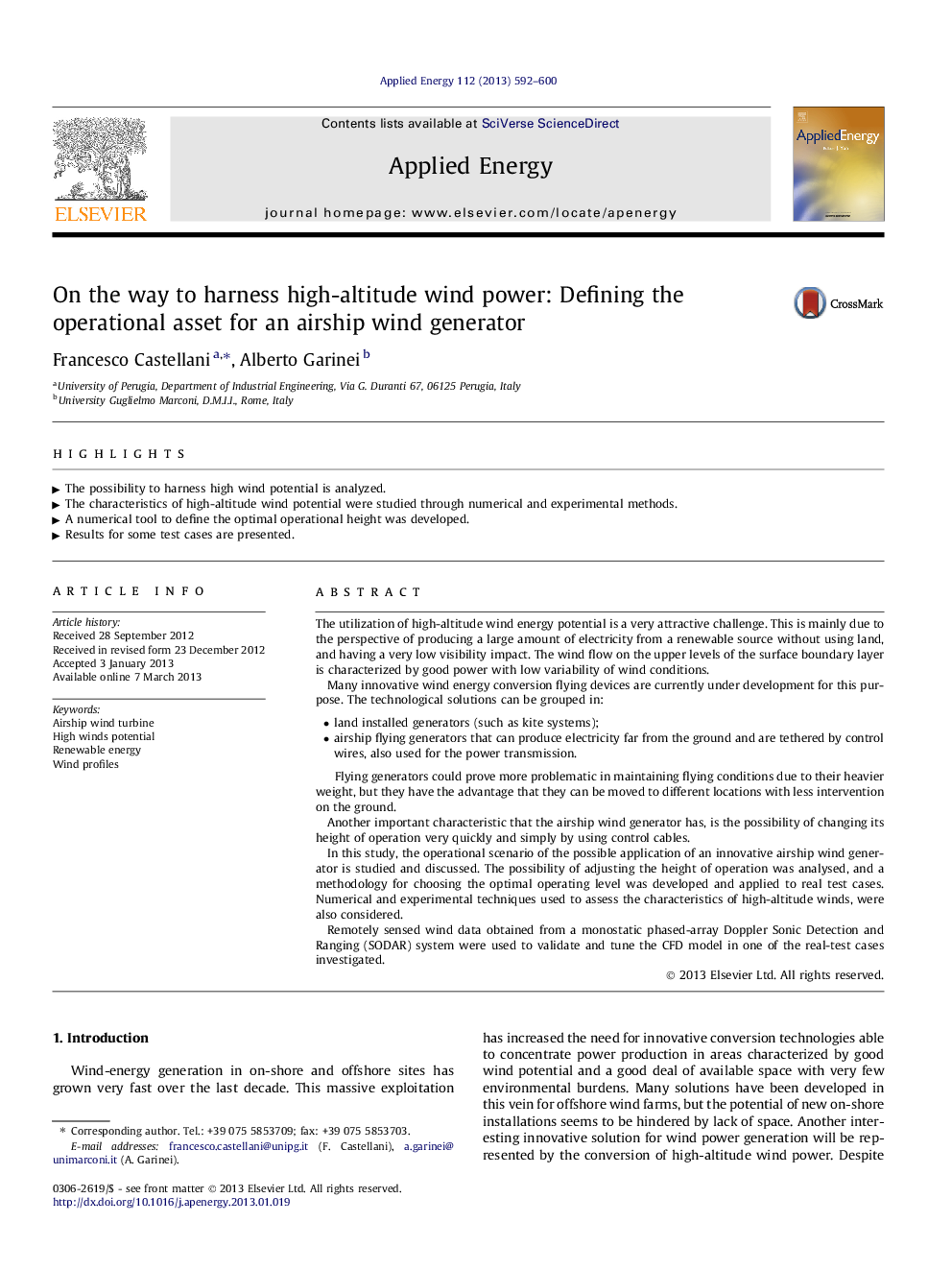| Article ID | Journal | Published Year | Pages | File Type |
|---|---|---|---|---|
| 242936 | Applied Energy | 2013 | 9 Pages |
The utilization of high-altitude wind energy potential is a very attractive challenge. This is mainly due to the perspective of producing a large amount of electricity from a renewable source without using land, and having a very low visibility impact. The wind flow on the upper levels of the surface boundary layer is characterized by good power with low variability of wind conditions.Many innovative wind energy conversion flying devices are currently under development for this purpose. The technological solutions can be grouped in:•land installed generators (such as kite systems);•airship flying generators that can produce electricity far from the ground and are tethered by control wires, also used for the power transmission.Flying generators could prove more problematic in maintaining flying conditions due to their heavier weight, but they have the advantage that they can be moved to different locations with less intervention on the ground.Another important characteristic that the airship wind generator has, is the possibility of changing its height of operation very quickly and simply by using control cables.In this study, the operational scenario of the possible application of an innovative airship wind generator is studied and discussed. The possibility of adjusting the height of operation was analysed, and a methodology for choosing the optimal operating level was developed and applied to real test cases. Numerical and experimental techniques used to assess the characteristics of high-altitude winds, were also considered.Remotely sensed wind data obtained from a monostatic phased-array Doppler Sonic Detection and Ranging (SODAR) system were used to validate and tune the CFD model in one of the real-test cases investigated.
► The possibility to harness high wind potential is analyzed. ► The characteristics of high-altitude wind potential were studied through numerical and experimental methods. ► A numerical tool to define the optimal operational height was developed. ► Results for some test cases are presented.
